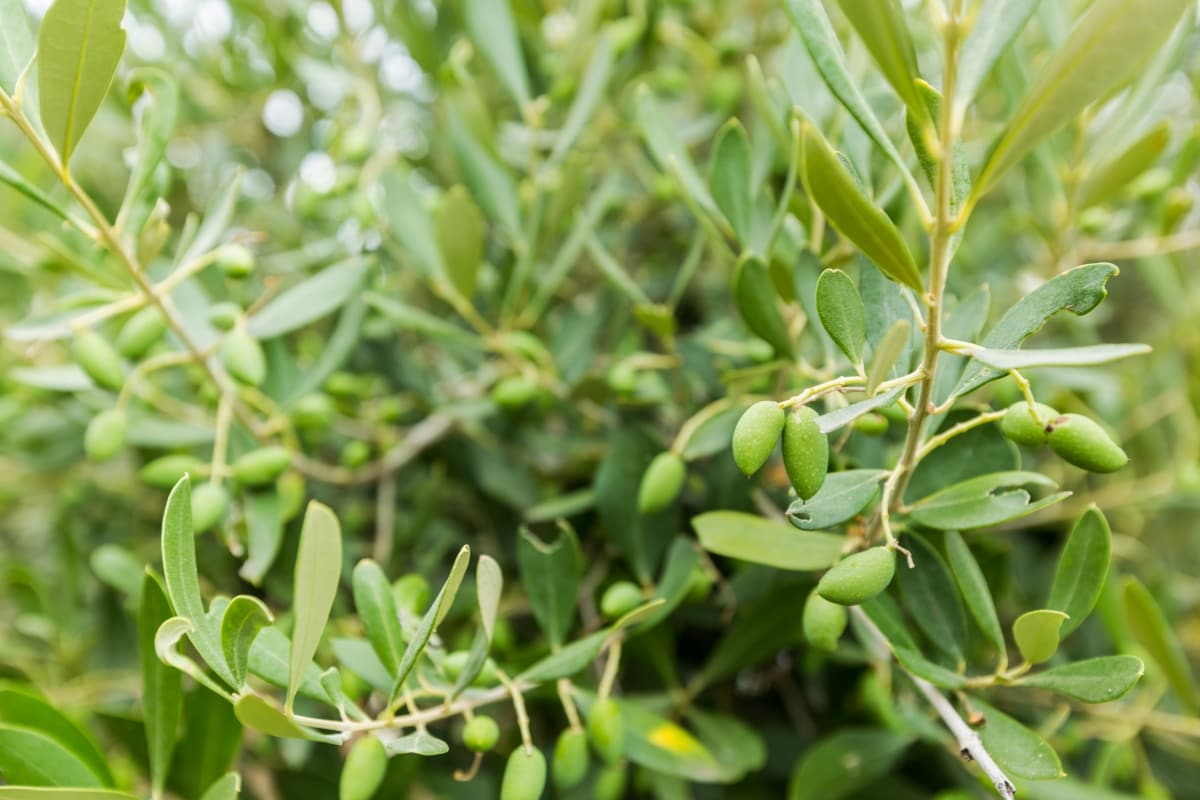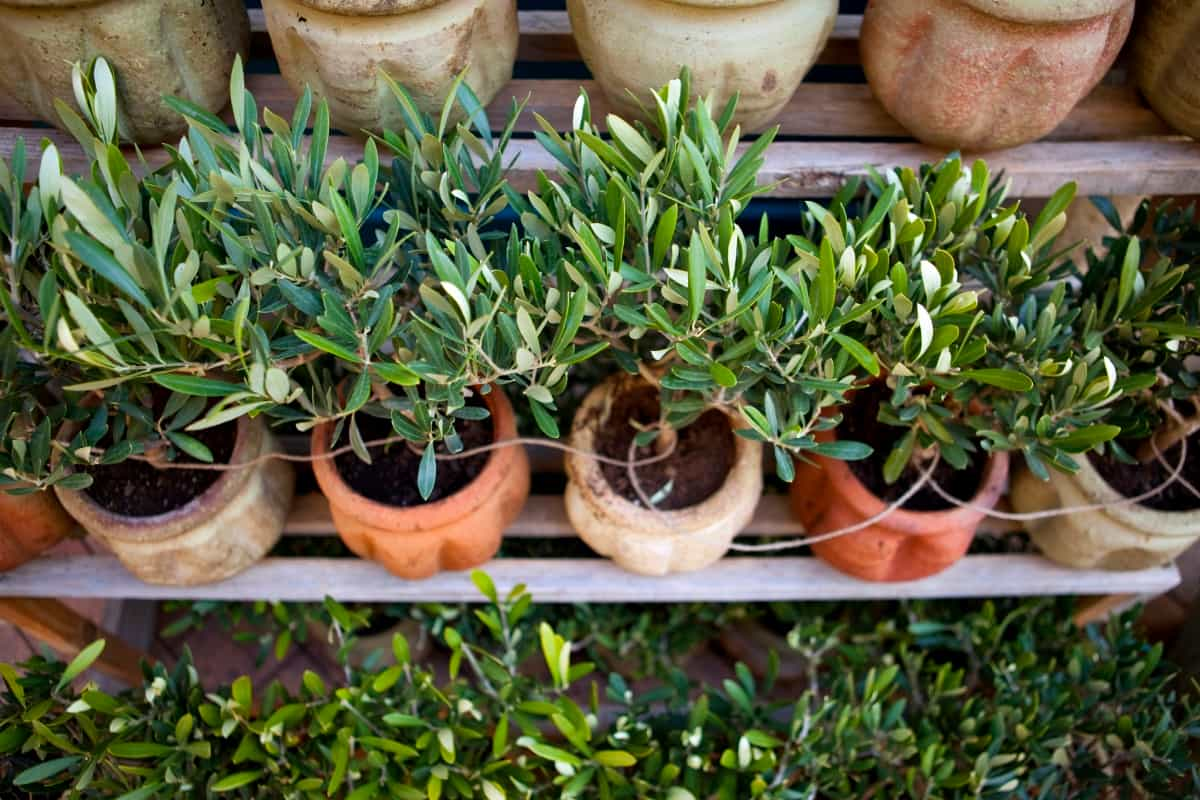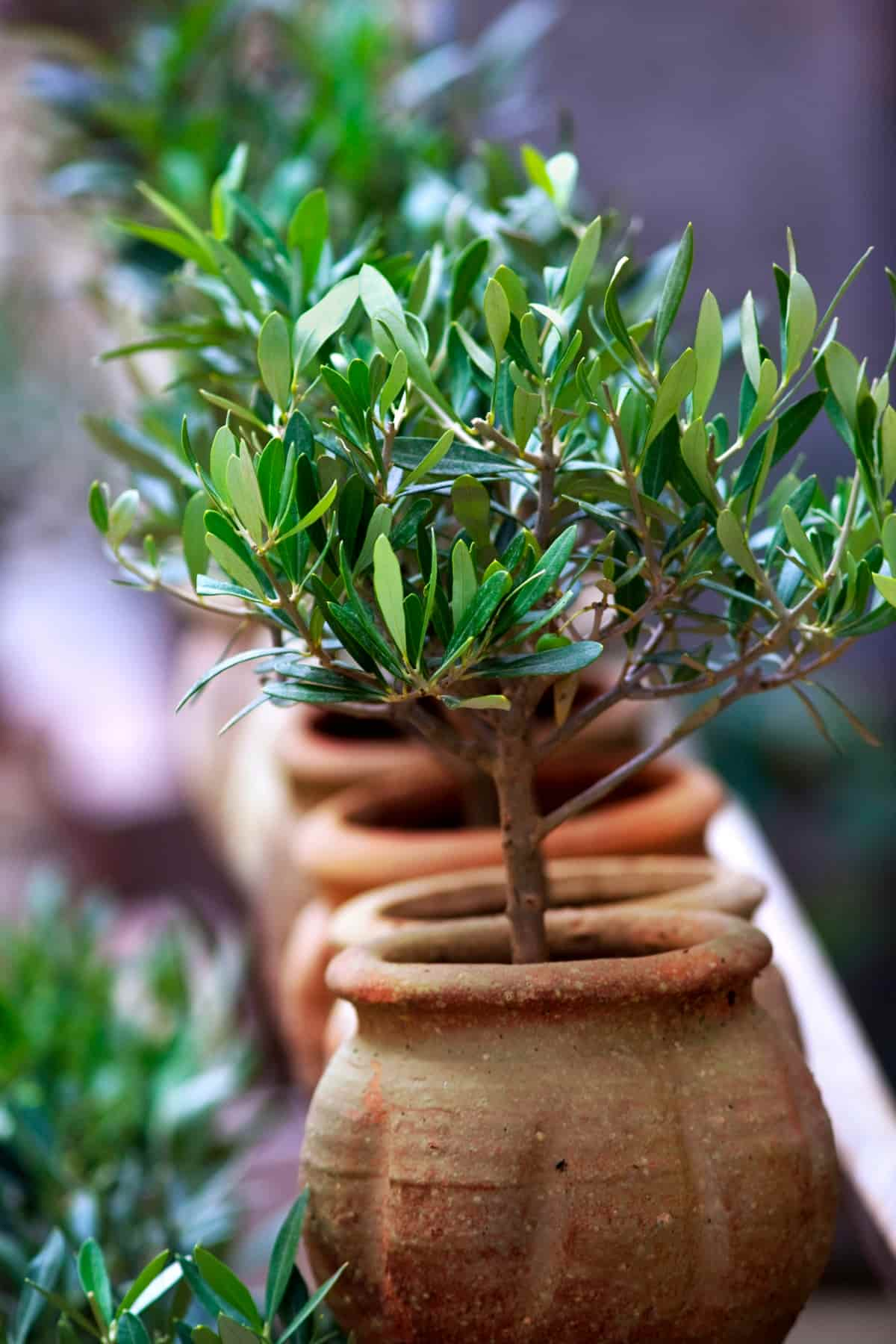In the vast world of container gardening, olive trees have risen to the forefront as one of the most sought-after plants. Growing olive trees in pots allows one to enjoy the beauty of these Mediterranean natives even in urban environments. But do olive trees in pots need repotting? Absolutely! Ensuring these trees thrive requires the right knowledge, especially concerning their soil, repotting needs, watering techniques after repotting, and the challenges they might face.

What is the best soil for repotting olive trees? How often should you water them post-repotting? And is it possible to repot an olive tree in summer? This comprehensive guide aims to answer all these pressing questions, ensuring your potted olive tree survives and thrives.
How to Grow Olive Trees in Pots
Choosing the Right Pot for Growing Olive Trees
The first step towards successful olive tree cultivation in pots is selecting the appropriate container. Look for pots with a minimum diameter of 24 inches for young trees, ensuring room for growth. As mature olive trees in pots become larger, they might require even more extensive containers. The pot should also have efficient drainage holes to prevent waterlogging. Terra-cotta or ceramic pots are preferred because they allow the soil to breathe, facilitating better root health.
Selecting the Ideal Olive Tree Variety for Container Gardening
Different olive tree varieties have different growth habits. For container gardening, dwarf or semi-dwarf varieties are the best. These varieties remain compact, making them suitable for constrained spaces such as patios and balconies. Research various varieties to find the one best suits your climatic conditions and aesthetic preferences.
Preparing the Potting Mix for Olive Trees in Containers
The answer to the often-asked question, “What is the best soil for repotting olive trees?” is creating a well-draining mix. The best soil for olive trees in pots combines the standard potting mix: one part perlite and coarse sand. This mixture ensures proper drainage and prevents root rot and other moisture-related issues.
Planting Olive Trees in Pots: Step-By-Step Guide
Start by layering some coarse gravel or broken pottery pieces at the bottom of your pot to enhance drainage. Then, fill the pot with the prepared potting mix until it’s about a third full. Position your olive tree sapling in the center, ensuring its roots spread well. Add soil around the sapling, pressing gently to remove air pockets. Ensure the tree stands upright and the soil remains an inch below the pot’s rim.
In case you missed it: How to Grow and Care for Olive Trees: Planting Instructions

Watering Techniques for Olive Trees in Pots
Once planted or repotted, the next question is, “How often do you water olive trees after repotting?”. Water the tree thoroughly, ensuring the moisture reaches the deeper roots. Later, water when the top inch of soil feels dry. Olive trees prefer deep, infrequent watering to shallow, frequent watering. Ensure the pot drains well after each session to avoid water stagnation.
Fertilizing Strategies for Container-Grown Olive Trees
For healthy growth and fruit production, olive trees in pots require regular feeding. Use a balanced, slow-release fertilizer during the growing season, typically spring and early summer. Refrain from fertilizing in late summer or winter when the tree is dormant.
Pruning and Training Olive Trees in Containers
Proper pruning enhances airflow sunlight penetration and stimulates growth. Annually, during late winter or early spring, prune dead or weak branches. This also helps shape the tree and keep its size manageable for the container.
Protecting Potted Olive Trees from Pests and Diseases
Like their ground-planted counterparts, olive trees in pots can fall prey to pests and diseases. Regularly check the tree for signs of infestation. Aphids, scale insects, and olive fruit flies are common culprits. Use organic insecticidal soaps or neem oil for treatment. Keep the surrounding area clean to prevent fungal diseases.
Overwintering Olive Trees in Pots
While olive trees are hardy, extremely low temperatures can damage them. If the winters are tough, relocate your potted olive tree to a protected spot, such as a garage or a greenhouse. Ensure the tree still receives ample sunlight. Water sparingly during this period.
Harvesting Olives from Container-Grown Trees
With proper care, your potted olive tree will produce olives. Typically, olives mature in late summer to early fall. Pick the olives when they’re the size and color you want, choosing between green or black olives. Patience is key, as olive trees may take a few years to start fruiting.
In case you missed it: How to Grow and Care for Olive Bonsai: Planting, Pruning, and Repotting Instructions

Problems With Olive Trees in Pots
Several issues can plague olive trees in pots. Giving plants too much water is a usual issue that can cause root rot. Yellowing leaves can indicate poor drainage or nutritional deficiencies. As mentioned earlier, pests can be a concern. Stay vigilant and address problems early to ensure your olive tree remains healthy and productive.
How to Look After Olive Trees in Pots: Potted Olive Tree Care
Caring for olive trees in pots involves several key strategies to ensure their growth and longevity. First, make sure your pot has good drainage to avoid soil getting too wet, which can harm the roots. Put your olive tree where it gets at least 6 hours of direct sunlight each day. Water deeply and infrequently, allowing the top inch of soil to dry between watering sessions. Fertilize with a balanced, slow-release fertilizer during the growing season and ensure regular pruning to promote air circulation and shape the tree.
How Fast Do Olive Trees Grow in Pots
The growth rate of olive trees in pots varies based on factors like variety, pot size, soil quality, and overall care. Typically, potted olive trees grow slower than their counterparts planted in the ground due to constrained root space. On average, a potted olive tree might grow 1 to 2 feet per year, with dwarf varieties growing slightly slower. However, they can thrive with optimal care and even bear fruit in their limited space.
Repotting Olive Tree: When and How
Olive trees in pots eventually outgrow their containers, necessitating repotting. Ideally, young trees should be repotted every two to three years, while older, mature olive trees may require repotting every four to five years. To repot, select a larger container with good drainage. Take the tree out of its current pot. Trim any very long or hurt roots. Put some new soil in the new pot. Place the tree in it and fill with soil, pressing it down tight. Water thoroughly after repotting.
Best Soil for Olive Trees in Pots
The ideal soil for olive trees in pots provides excellent drainage. Typically, you create a good mix by blending two parts of regular potting soil with one part perlite and one part coarse sand. This combination prevents water stagnation, reducing the risk of root rot. For added nutrition, you can incorporate compost into the mix. Regularly check the soil’s pH; olive trees prefer slightly alkaline conditions, so aim for a pH of 7.5 to 8.5. Adjust with lime or sulfur if necessary.
In case you missed it: Best Fertilizer for Spinach in Pots: Organic, Natural, Homemade, NPK Ratio, When and How to Apply

Conclusion
With the right care, olive trees in pots can thrive and produce fruit. Addressing their specific needs regarding potting, soil, watering, and potential problems ensures they remain a beautiful and productive addition to your container garden.
- Feed Your Flock for Less: Top 10 Tips to Save on Chicken Feed
- Ultimate Guide to Ossabaw Island Hog: Breeding, Raising, Diet, and Care
- Hatching Answers: The Top 10 Reasons Your Chickens Aren’t Laying Eggs
- Eggs and Economics: Breaking Down the Cost of Raising Backyard Chickens
- Defend Your Greens: Proven Methods to Keep Iguanas Out of Your Garden
- Ultimate Guide to Cinnamon Queen Chicken: A Comprehensive Guide for Beginners
- Ultimate Guide to California Tan Chicken: Breeding, Raising, Diet, Egg-Production and Care
- Ultimate Guide to Marsh Daisy Chicken: Breeding, Raising, Diet, and Care
- 10 Types of Chicken Farming Businesses You Can Start for Profits